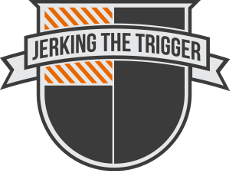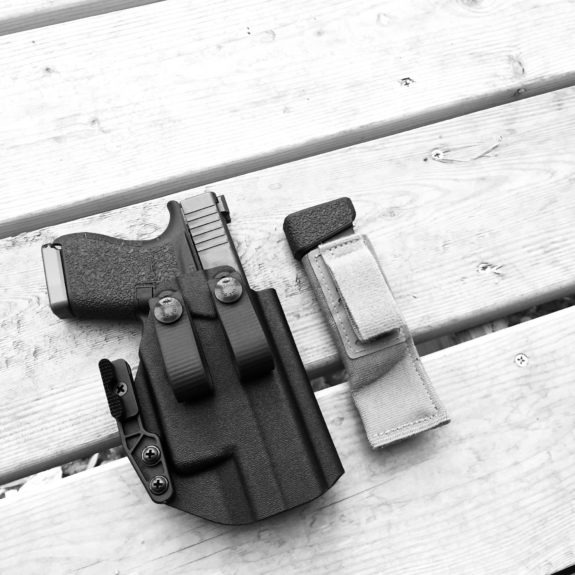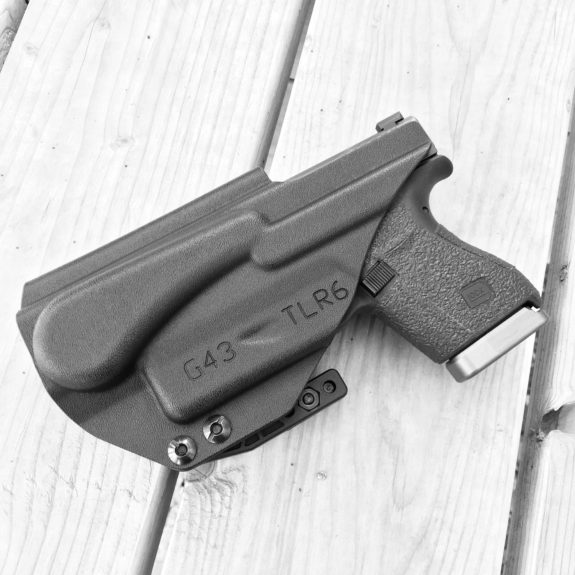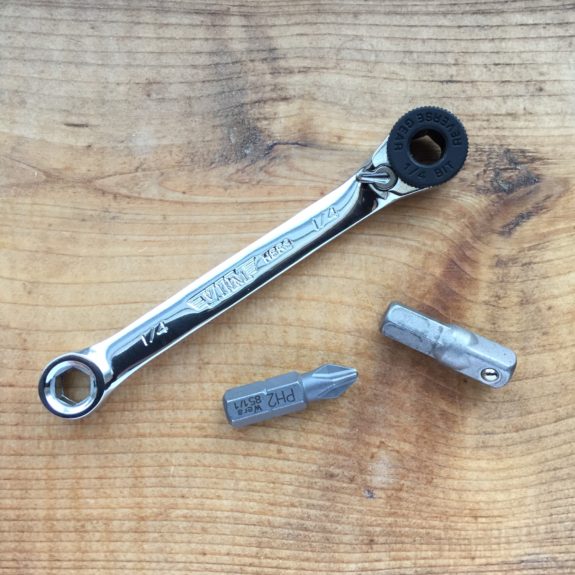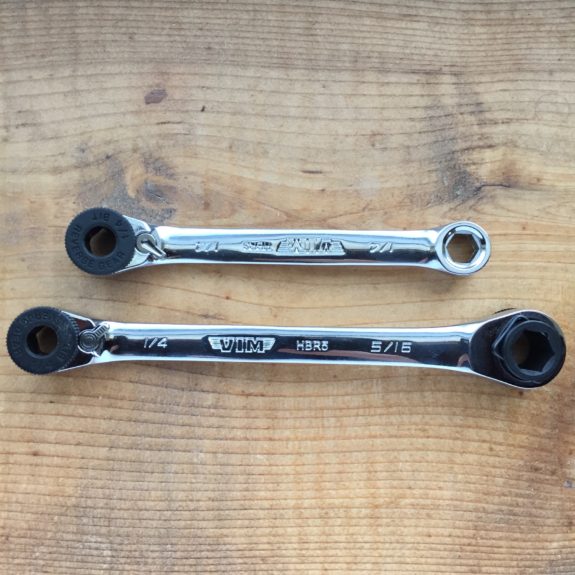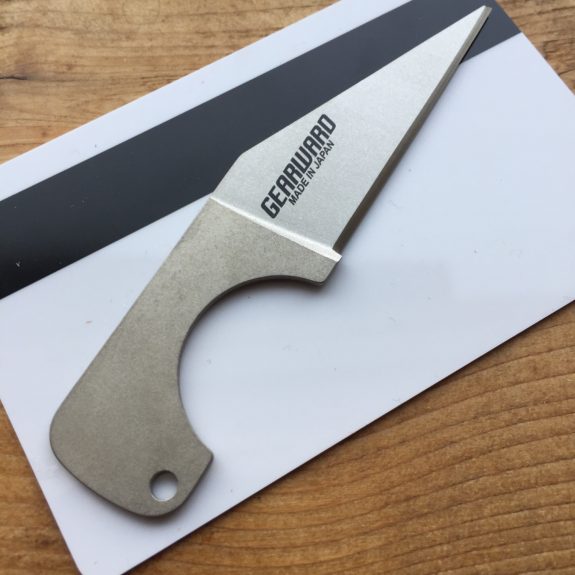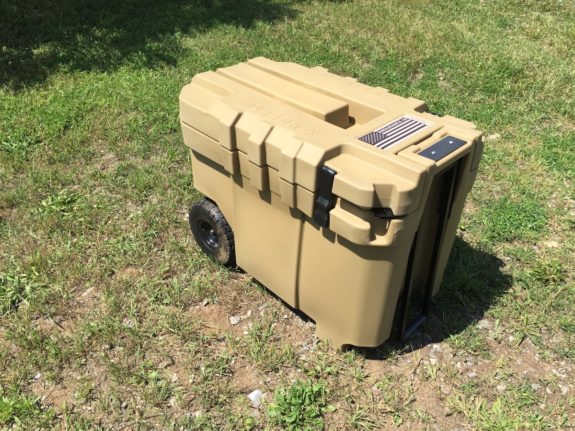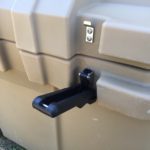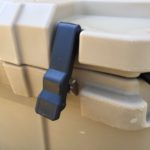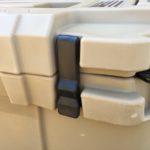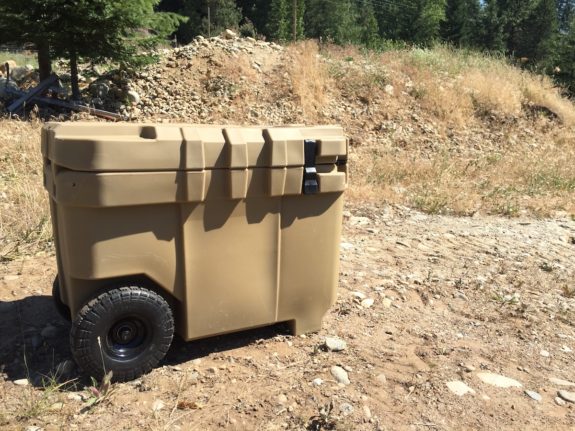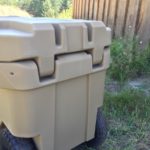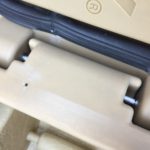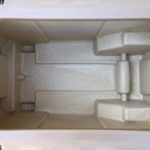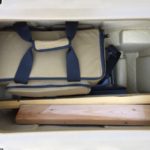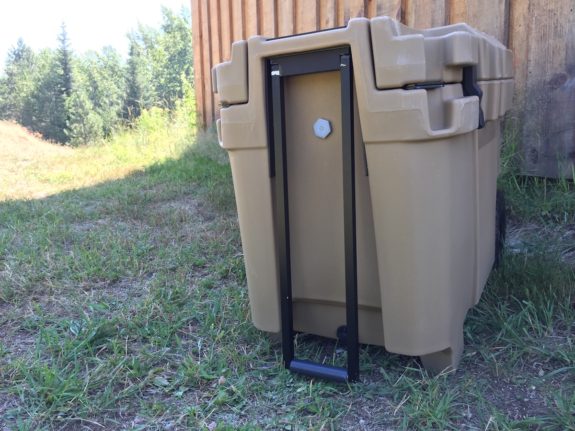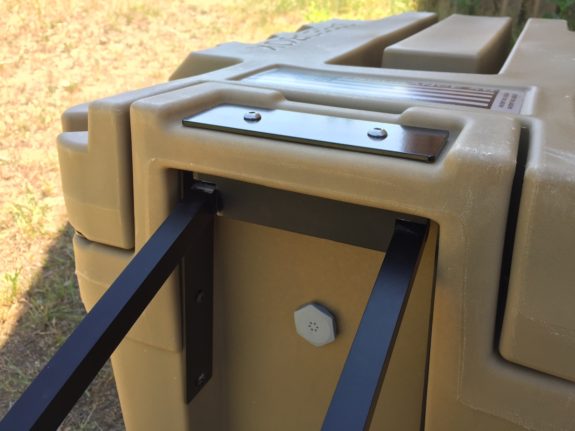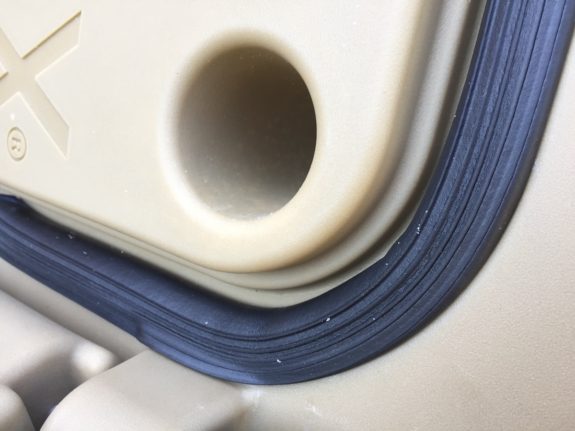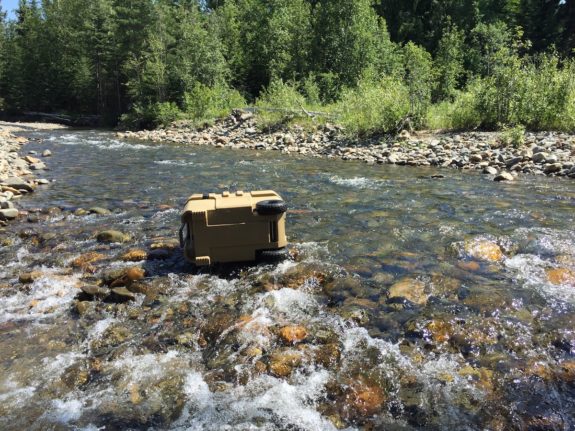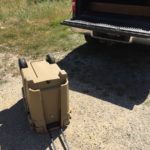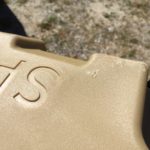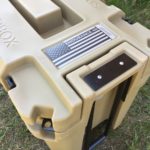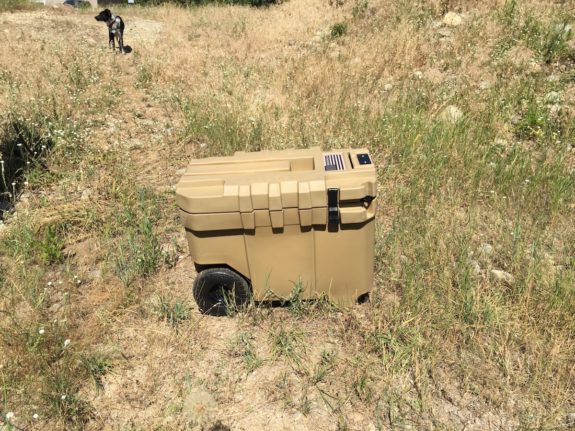A reader recently emailed me looking for a recommendation on a holster. He was looking to replace a holster that wasn’t working for him. It was not a holster that I have personally used but it had many features common to kydex inside the waistband holsters and looked like a perfectly acceptable holster to me.
He was having problems with how the holster concealed and its stability on his belt. I struggled to come up with a recommendation for a new holster because any holster I could come up with had a similar feature set to the one he was trying to replace. We decided to try to a few things to correct the issues he was having with his current holster. Fortunately, that approach worked. All he really needed to do was make his belt loops smaller to match his belt.
Many modern holsters offer quite a bit of adjustment to the end user. “Adjustment” may not even be the right word because it sounds optional. You can think of it more as “fitting” because holsters are designed to work for a wide range of shooters and really need to be fit to the individual. Adjustments like ride height, cant, belt loop size, number of clips, and types of belt hardware all come to bear on how well a holster works for a particular shooter.
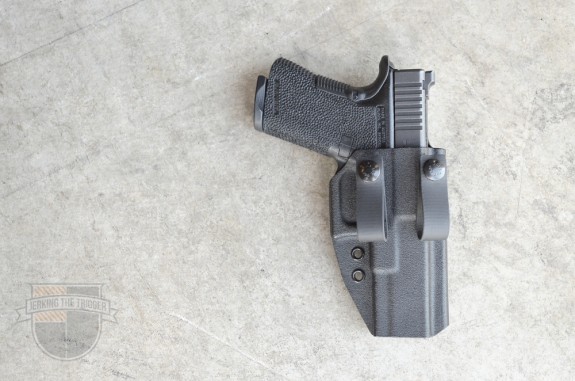
Like most great holsters, the Henry Holsters AIWB is even better when the loops are matched to belt size.
Belt Hardware Size
Open a new tab in your browser and head over to Instagram. Search “holster” and check out #holster. Now, look at the top ten holster pics with pull-the-dot style soft belt hardware in your feed. I’ll wait… When I did this, none of the 10 pictures showed any evidence of the belt straps having been trimmed to fit a belt. Either there are a lot of people using IWB kydex holsters on 1.75-2″ wide belts (doubtful considering many belt loops won’t even fit belts that wide) or most people just never take the time to trim their belt loops to fit their 1.25″ and 1.5″ belts.
Matching your belt hardware size to the size of your belt is like an instant upgrade for a holster. It should probably be the first thing your do when you receive a new holster because it has tremendous influence on several attributes of the holster and other adjustments. It improves the stability of the holster on the belt reducing wobble, tilt, and sliding. It ensures that the kydex releases the handgun properly. It helps make devices like struts/claws work consistently to turn the butt of the handgun in toward the wearer.
You may have to either purchase new belt hardware or resize your current belt hardware to make this happen. If you do replace/adjust your belt hardware, check to make sure that things like claws/struts are still engaging your belt effectively as sometimes reducing belt loop size effectively raises the ride height. You may need to lower your ride height slightly to accommodate the change. If you are adjusting the size of the common black coated nylon soft loops, consider trimming the excess loop off once you have tested your adjustment so the ends don’t interfere with establishing a full firing grip.
Tension
I tend to prefer quality holsters WITHOUT adjustable retention but if my holster has a retention adjustment screw, I make sure to tune it to the tension I prefer. Basically, I tighten the adjustment until I can hold the holster upside-down and give a shake without the handgun falling out. FOLLOW SAFETY RULES WHEN YOU DO THIS!
Some tension adjustment screws tend to back out slightly over time so you may want to add a little thread locking compound to the screw. I have also had a few holsters that tend to lose a little tension with wear so you may want to check your tension periodically.
Ride Height
Ride height can and should be tailored to the wearer and the application for the specific holster. Some may find that they need to lower the ride height on IWB or AIWB holsters to prevent the gun from tilting outward away from the body. I usually set my inside the waist band holsters to sit as low as will still allow a full firing grip to be established directly out of the holster. Some people with higher belt lines may find that extreme high ride holsters are uncomfortable to wear as the gun rides most of the way up their torso. Some OWB holsters will lay tighter against the body simply by tuning the ride height.
Cant
The cant of a holster is typically a preference but it can be an important adjustment for some shooters depending on size and the position of the holster on their body. Adding a bit of cant might make a larger gun easier to conceal for a shooter of smaller stature or make the draw stroke easier to deal with for a holster that is located slightly behind the hip.
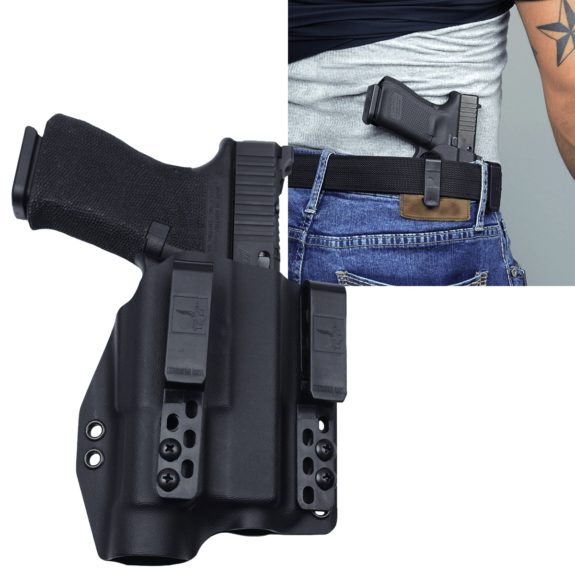
The Bravo Concealment DOS holsters can be used with 1 or 2 clips depending on user preference.
Number of Clips
Some holsters can be used with either 1 or 2 belt clips. The performance will vary greatly based on this choice. Typically, shooters will find that the holster is perhaps more comfortable with one clip but more stable and concealable with 2 clips though this varies by holster and body type.
If you are going to try to remove a belt clip, make sure your holster is designed to work this way and that you are leaving the correct belt loop installed. Typically, you will want to leave the one located most centrally on the holster.
Type of Clip
If you have a holster that slips off your belt instead of releasing the handgun during the drawstroke, you definitely want to see if you can find new belt hardware. In most cases, you are not limited to the clips provided by the holster maker. Find something that works for you and your belt.
Other Adjustments and Considerations
There are, of course, other adjustments that I haven’t covered here. There are less common adjustments like adjustable claws/struts or items like removable ramps/pads that will have bearing on how aggressively the handgun is turned in toward the wearer. You may also be able to improve your initial grip by trimming a little material off a sweat guard. In some cases, you may even need to remold a kydex holster slightly to better accommodate something like an aftermarket part.
Don’t over look your belt either. Some holsters need belts with certain attributes in order to really shine. Almost every holster on the market will benefit from being worn on a good quality gun belt (click HERE to determine if a belt is stiff enough). Consider belt tension as well. Many AIWB carriers have learned that tighter isn’t always better when it comes to belt tension.
Do Your Part!
Every shooter has that holster box in the corner. You know the one. It’s full of holsters that didn’t work, that were worn out, or that were outgrown as you learned more about what worked for you. If you spend much time shooting, the holster box is unavoidable. However, you can avoid filling the holster box needlessly and prematurely if you take the time to tune your holsters. There’s a good chance that the holster you are using right now could conceal better, be more comfortable, and perform better in general. If you do nothing else, at least match your belt hardware to your belt size (and then post a pic to Instagram so we can fix that mess).
Before you toss another holster in the holster box for poor performance, make sure you have done your part in tuning the holster.
